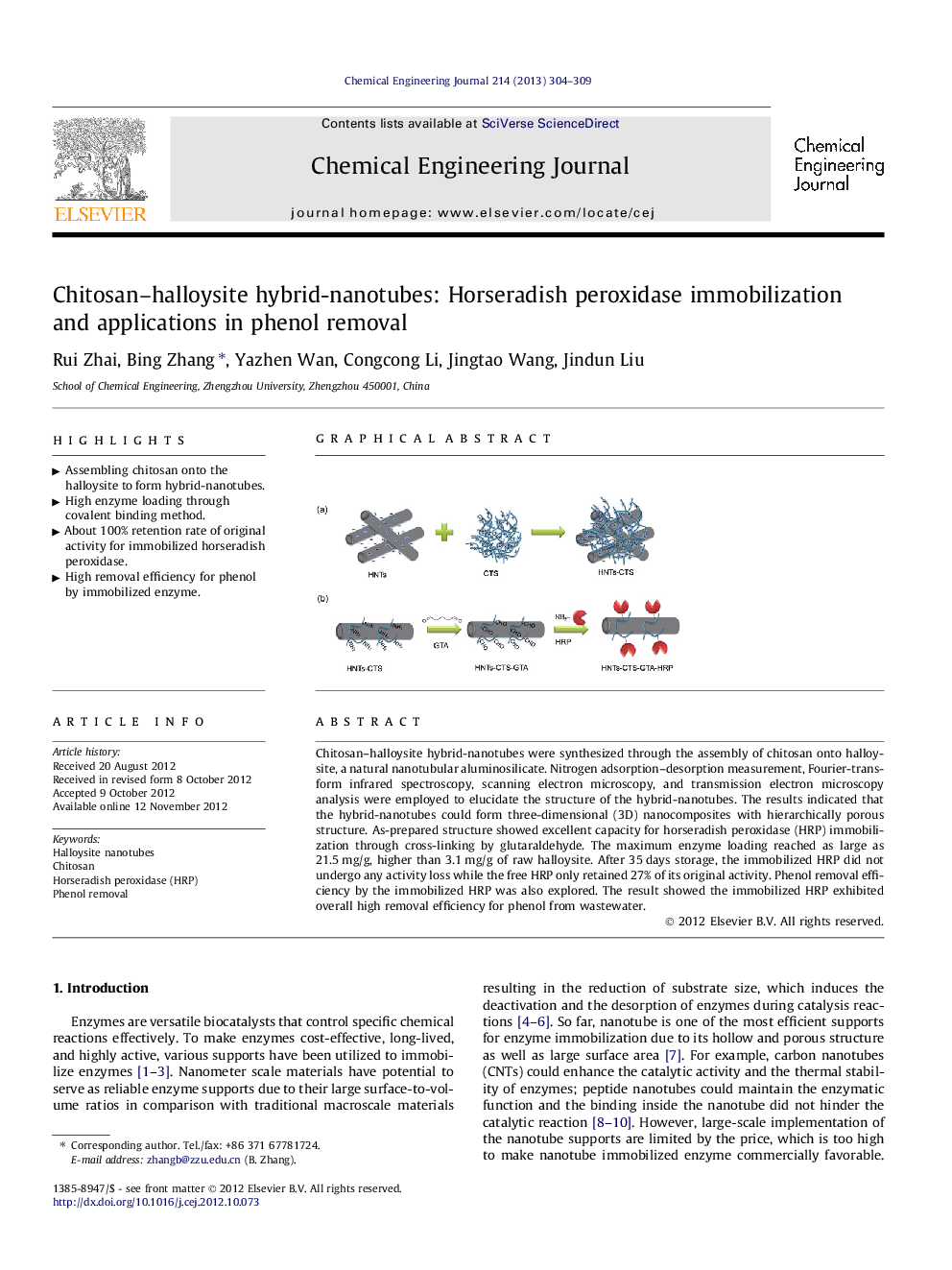| Article ID | Journal | Published Year | Pages | File Type |
|---|---|---|---|---|
| 149053 | Chemical Engineering Journal | 2013 | 6 Pages |
Chitosan–halloysite hybrid-nanotubes were synthesized through the assembly of chitosan onto halloysite, a natural nanotubular aluminosilicate. Nitrogen adsorption–desorption measurement, Fourier-transform infrared spectroscopy, scanning electron microscopy, and transmission electron microscopy analysis were employed to elucidate the structure of the hybrid-nanotubes. The results indicated that the hybrid-nanotubes could form three-dimensional (3D) nanocomposites with hierarchically porous structure. As-prepared structure showed excellent capacity for horseradish peroxidase (HRP) immobilization through cross-linking by glutaraldehyde. The maximum enzyme loading reached as large as 21.5 mg/g, higher than 3.1 mg/g of raw halloysite. After 35 days storage, the immobilized HRP did not undergo any activity loss while the free HRP only retained 27% of its original activity. Phenol removal efficiency by the immobilized HRP was also explored. The result showed the immobilized HRP exhibited overall high removal efficiency for phenol from wastewater.
Graphical abstractFigure optionsDownload full-size imageDownload as PowerPoint slideHighlights► Assembling chitosan onto the halloysite to form hybrid-nanotubes. ► High enzyme loading through covalent binding method. ► About 100% retention rate of original activity for immobilized horseradish peroxidase. ► High removal efficiency for phenol by immobilized enzyme.
